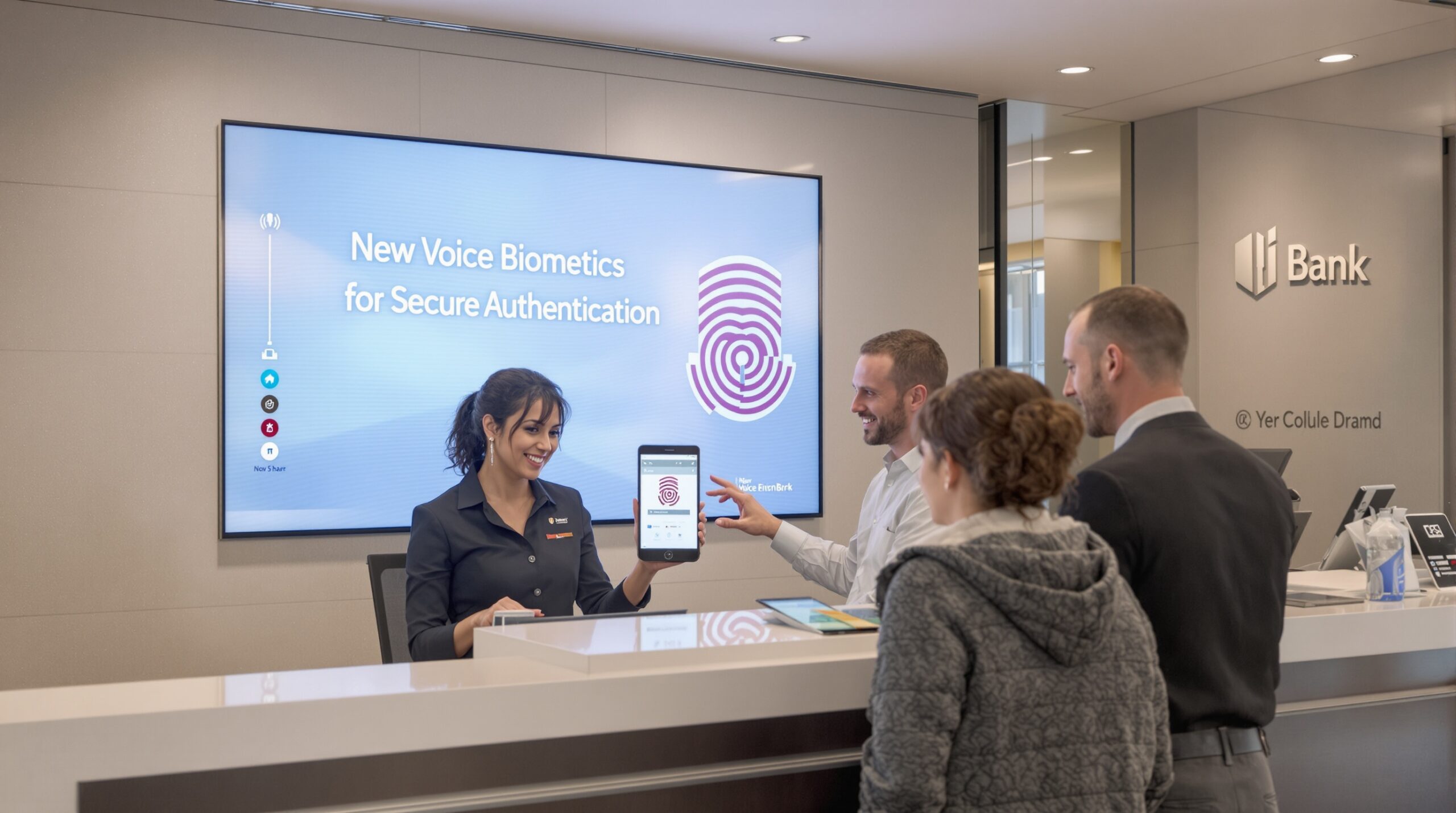The banking sector faces unprecedented challenges as sophisticated deepfake scams threaten customer security. Banks are responding swiftly by deploying voice biometrics for advanced authentication. This move aims to strengthen security protocols, protect customers, and secure financial assets in an evolving threat landscape.
Understanding Deepfake Technology and Its Dangers
Deepfake technology uses artificial intelligence to manipulate audio and video. This process often makes it difficult to distinguish fakes from authentic content. Cybercriminals use deepfake audio to mimic a customer’s voice during fraudulent calls. They may impersonate bank employees or customers to bypass traditional security checks.
With rapid advances in AI, deepfakes are becoming much more convincing. The increase in audio deepfakes has exposed critical gaps in legacy authentication systems. Such attacks can trick bank staff and automated systems, leading to unauthorized access or financial loss.
Limitations of Traditional Authentication Methods
Traditionally, banks have relied on knowledge-based authentication. Customers must answer security questions, provide passwords, or share personal details to verify their identity. These methods are easy for attackers to compromise, especially with personal information now widely available through social engineering or data breaches.
Furthermore, criminals can circumvent authentication by stealing passwords or answering security questions using public information. These weaknesses become dangerous when combined with the power of audio deepfakes. Attackers only need a sample of someone’s voice — often found in social media videos or voicemails — to create effective imitations.
Legacy authentication methods can no longer protect bank customers from cleverly crafted, AI-driven impersonation attempts. This vulnerability has prompted institutions to seek stronger, more innovative solutions.
Voice Biometrics: The Next Step in Security
Voice biometrics offers a more secure and customer-friendly alternative to traditional passwords and PINs. This technology analyzes unique vocal patterns, such as pitch, speed, accent, and rhythm. Each person’s voice contains hundreds of distinguishable characteristics, making it highly reliable for digital identity verification.
During an interaction, the system compares the caller’s voice against a previously stored voiceprint. Voice biometrics can authenticate customers in seconds, often without requiring additional actions or codes. This innovation not only improves security but also streamlines the customer experience.
Advanced voice biometric systems can also detect whether a voice is computer-generated or a deepfake. These algorithms analyze inconsistencies, background noise, and telltale markers of synthetic speech. Through constant learning, the technology becomes more adept at catching new threats as they emerge.
How Banks Are Adopting Voice Biometrics
Major global banks have started deploying voice biometrics across their customer service channels. Customers can enroll in these programs via phone, mobile app, or in-branch appointments. Upon enrollment, the bank records a secure voiceprint that serves as the customer’s vocal fingerprint.
When customers call the bank, the system passively analyzes their speech during the conversation. There’s no need to say a specific phrase or repeat set words. If the voice matches the stored voiceprint, the system grants access or authorizes transactions. If not, an alert is triggered for further verification.
Some banks have combined voice biometrics with other technologies such as facial recognition or behavioral analytics. This layered approach addresses multiple attack vectors at once. It ensures robust protection without sacrificing convenience for legitimate users.
Benefits for Customers and Financial Institutions
Voice biometrics enhances both customer confidence and operational efficiency. Customers benefit from seamless authentication without the need to remember complex passwords or answer personal questions. Convenience remains high while the risk of unauthorized access drops significantly.
Financial institutions benefit from reduced fraud-related losses and fewer instances of identity theft. Voice biometrics also lowers call center costs by automating the verification process. Fewer manual interventions are needed, decreasing the chance of human error or manipulation.
Regulatory compliance is another important benefit. Banks must adhere to strict guidelines around financial data and customer protection. Implementing biometrics demonstrates a proactive stance on cybersecurity, meeting increasing demands from regulators and customers alike.
Challenges in Voice Biometrics Implementation
While promising, voice biometrics is not without challenges. The technology must adapt to factors like changes in voice due to illness, aging, or background noise. Developers must continuously improve algorithms to reduce false positives and negatives.
Privacy concerns also warrant careful attention. Customers need reassurance about how their biometric data will be stored and protected. Banks must maintain transparency on data use, retention periods, and opt-out procedures.
Another challenge comes from highly advanced deepfakes. If a synthetic voice is created with enough skill, even sophisticated systems could be fooled. Continuous upgrades and multi-factor authentication may help address these persistent risks.
The Future: Combining Biometrics with AI and Human Oversight
To stay ahead of increasingly advanced scams, banks are integrating voice biometrics with AI-driven threat detection. AI can learn to identify emerging deepfake signatures and alert security teams in real time. Combining this with human review adds critical oversight and rapid response to suspicious activity.
Some institutions are moving towards multi-modal authentication. Here, voice biometrics work alongside retina scans, device recognition, or behavioral patterns. This creates a formidable barrier to unauthorized access, making exploitation far more complex for cybercriminals.
Collaboration between banks, technology providers, and security experts will drive ongoing improvements. As threats evolve, so will countermeasures and best practices. This coordinated effort will be vital in keeping customer accounts and sensitive data safe.
Conclusion: Strengthening Trust in the Digital Age
Deepfake scams are a top security concern for the financial sector. Banks are countering this threat by adopting voice biometrics for customer authentication. This technology enhances security while delivering a streamlined experience to customers.
Challenges remain, including privacy, technological limitations, and ever-evolving deepfakes. Nonetheless, the shift towards voice biometrics represents a critical step in future-proofing digital banking. As banks continue to innovate, customer trust and account safety will remain at the heart of these advancements.

